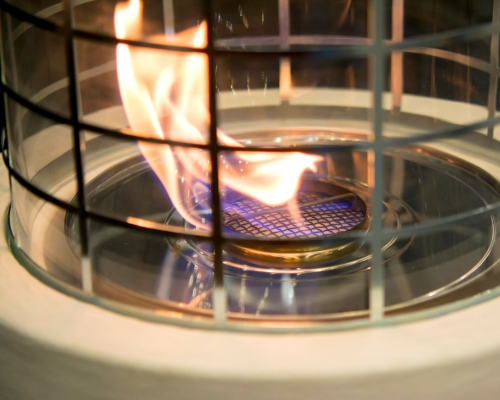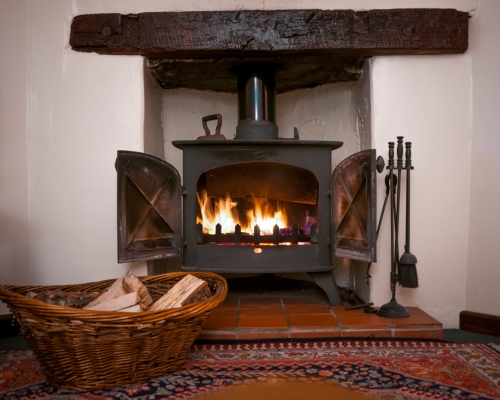The allure of a gas fireplace—its warm glow, the crackling sound, and the ease of a flick-of-a-switch ignition. But let’s cut to the chase: You’re here because you’re wondering if this cozy addition to your home is also a friend to your wallet. Specifically, you might be asking, “Does using a gas fireplace save money?”
You’re not alone; many homeowners ponder this very question, especially as energy prices continue to soar.
The answer varies. While some gas fireplaces are designed to be energy-efficient and can potentially lower your heating bills, others may not offer significant savings. Factors like the type of gas fireplace, how often you use it, and current energy prices all contribute to the cost-effectiveness of owning one.
So, let’s embark on this journey to uncover the financial implications of owning a gas fireplace. Are you ready to stoke the flames of this debate?
Does Using A Gas Fireplace Save Money?
Whether or not a gas fireplace can save money and how much can it save money depends on the following:
1. The Types of Gas Fireplaces and Their Efficiency

Energy Efficiency of Gas Logs
While gas logs are more efficient than traditional wood-burning fireplaces, they still have room for improvement in terms of energy conservation.
About 60-80% of the heat generated by gas log fireplaces escapes through the chimney. This means only 20-40% of the heat is actually utilized to warm your space.
Energy Efficiency of Gas Inserts
Gas inserts are notably more efficient than gas logs. They are designed to minimize heat loss, with only about 20-30% of the heat escaping. This makes them a more cost-effective option for those looking to save on heating costs.
Expert Tip: If you’re serious about energy efficiency and saving money, gas inserts are generally the better option. However, it’s crucial to consider the initial cost of installation and the price of natural gas in your area.
2. The Cost Factor: Natural Gas Prices
How the Cost of Natural Gas Affects the Cost-Effectiveness of a Gas Fireplace
The Direct Correlation
The cost of natural gas is a significant factor in determining whether your gas fireplace will save you money. If natural gas prices are high, the cost to run your gas fireplace will also be high, negating any energy efficiency benefits.
On the flip side, if natural gas prices are low, you could see substantial savings, especially if you’re using a more efficient gas insert.
Stat: According to the U.S. Energy Information Administration, the average price of natural gas for residential consumers was $16.71 per thousand cubic feet as of May 2023. This price can significantly impact your heating costs.
Regional Variations in Natural Gas Prices
Geographical Factors
The price of natural gas can vary significantly depending on your location. For instance, as per the U.S. BUREAU OF LABOR STATISTICS, natural gas prices are generally higher in the Northeast U.S. compared to the Midwest. This regional variation can affect the cost-effectiveness of using a gas fireplace.
Supply and Demand
Local factors such as supply disruptions, storage capacity, and even weather conditions can influence natural gas prices in a particular region. For example, a harsh winter could increase demand, leading to a spike in prices.
Expert Tip! Always check the current and historical natural gas prices in your specific region to get a more accurate estimate of potential savings.
3. Frequency of Use: Occasional vs. Regular
How Often You Use the Fireplace Can Impact Its Cost-Effectiveness

Occasional Use
If you only use your gas fireplace occasionally, perhaps for ambiance or during special occasions, the cost-effectiveness may not be a significant concern. In this scenario, the fireplace serves more as a luxury than a primary heating source.
Regular Use
On the other hand, if you use your gas fireplace as a primary or supplementary heating source, the frequency of use becomes a critical factor. The more you use it, the more natural gas you’ll consume, which could either save you money or cost you more, depending on the efficiency of your fireplace and the cost of natural gas.
Zone Heating and Its Benefits
What is Zone Heating?
Zone heating involves heating only the rooms that are in use, rather than heating the entire home. Gas fireplaces, particularly gas inserts, are excellent for this purpose because they can efficiently heat a specific area.
Benefits of Zone Heating
1. Energy Savings: By focusing on heating only the areas you use, you can reduce the workload on your central heating system, potentially saving on energy costs.
2. Cost-Effectiveness: Zone heating can be a cost-effective way to use your gas fireplace, especially if natural gas prices are low.
3. Comfort: Zone heating allows for more personalized temperature control, enhancing comfort.
4. Maintenance Costs

The Upkeep Required for Different Types of Gas Fireplaces
Gas Logs
Gas log fireplaces, while mimicking the aesthetic of a traditional wood-burning fireplace, require less frequent cleaning. However, they do need an annual inspection to check for gas leaks, venting issues, and the condition of the ceramic logs.
Gas Inserts
These are generally easier to maintain than gas logs. A yearly service check is usually sufficient, focusing on the blower, gas valves, and pilot light. Some models also have air filters that need periodic replacement.
Insight! Maintenance isn’t just about cleaning; it’s also about ensuring the safe and efficient operation of your fireplace. Neglecting this can lead to performance issues and even safety hazards.
How Maintenance Costs Can Add Up Over Time
Regular Checks
While an annual inspection might seem like a minor expense, it’s a recurring one. Over the years, these costs can accumulate, especially if you encounter issues that require replacement parts or professional repair services.
Unforeseen Repairs
Gas fireplaces are generally reliable, but they’re not immune to wear and tear. Unexpected issues like a malfunctioning blower or a faulty gas valve can result in costly repairs.
Long-Term Impact
The longer you own your gas fireplace, the more likely you’ll face higher maintenance costs. Components degrade over time, and even with regular upkeep, you may eventually need to invest in significant repairs or even a full replacement.
Reality Check! As per HomeAdvisor, the average cost for a gas fireplace repair ranges from $200 to $1000, depending on the issue. These costs can significantly impact the overall cost-effectiveness of your gas fireplace.
Final Thoughts
While gas fireplaces offer the unique advantage of instant ambiance and warmth at the flick of a switch, their cost-effectiveness is a nuanced subject.
As we’ve explored, factors like the type of gas fireplace, the fluctuating prices of natural gas, frequency of use, and maintenance costs all play pivotal roles in determining whether a gas fireplace will save you money.
I’m Grayson Watson, your frugal companion and the brain behind this money-saving extravaganza. Strap yourself in, because we’re about to embark on a wallet-friendly adventure like no other. Learn More!

